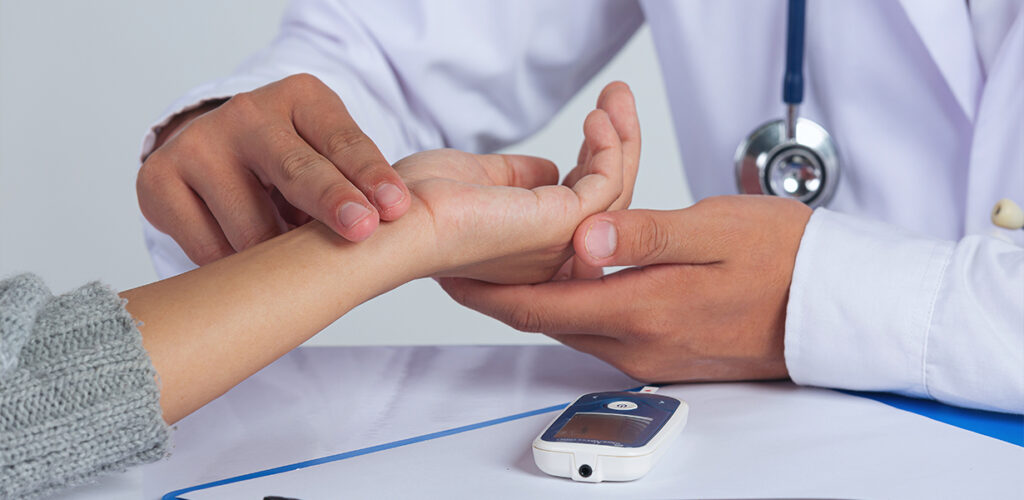Breaking Down the Heart’s Hidden Flaw: Dr. Udgeath Dhir Explains Ventricular Septal Defect (VSD)
When it comes to heart health, few things are more important than early diagnosis and clear understanding. In a recent, enlightening session, Dr. Udgeath Dhir, one of India’s most renowned cardiac surgeons, unpacks Ventricular Septal Defect (VSD) — a common but often misunderstood heart condition.
In a world filled with complicated medical jargon, Dr. Dhir brings clarity, compassion, and hope to those affected.
If you or a loved one is seeking to understand VSD better, this blog is your complete guide—presented in the simple, engaging style that Dr. Dhir is celebrated for.
What is Ventricular Septal Defect (VSD)?
Think of the heart as a well-oiled machine, divided into four chambers — two atria on top and two ventricles below. The ventricles are separated by a wall called the ventricular septum.
A Ventricular Septal Defect occurs when there’s a hole in this wall.
This hole allows blood to flow abnormally between the left and right ventricles, which can overload the lungs with blood and strain the heart.
Dr. Udgeath Dhir explains it beautifully:
“Imagine trying to fill two rooms with water, but a leak causes the water to spill from one into the other. Over time, both rooms get damaged.”
Causes of VSD: Born with It, or Developed Later?
VSD is mostly congenital, meaning it’s present at birth. But it can also be acquired after certain heart surgeries or heart attacks.
Here’s a breakdown of the causes:
- Congenital Causes: During fetal development, the septum might not form properly, leading to a hole.
- Acquired Causes: Heart attacks can sometimes create tears in the septum, leading to a VSD.
Interestingly, Dr. Dhir points out that many small VSDs may close on their own in infancy. However, larger defects may persist and need medical attention.
How Common is VSD?
According to Dr. Dhir, VSD is one of the most common congenital heart defects worldwide.
In fact, it accounts for nearly 30% of all congenital heart conditions detected in newborns.
The good news? With timely diagnosis and appropriate management, most cases can be treated effectively.
Recognizing the Symptoms: What to Watch Out For
The symptoms of VSD can vary depending on the size of the defect and the age of the individual.
Dr. Dhir outlines them clearly:
In infants:
- Fast breathing
- Difficulty feeding
- Failure to gain weight
- Sweating during feeds
In older children or adults:
- Breathlessness
- Fatigue
- Frequent respiratory infections
- Heart murmur (detected via stethoscope)
A heart murmur — a “whooshing” sound — is often the first clue that leads doctors to suspect a VSD.
Why VSD Needs Attention: Potential Complications
If left untreated, a VSD can cause serious problems over time.
Dr. Dhir stresses the importance of early intervention to prevent:
- Pulmonary Hypertension: High blood pressure in the lungs.
- Heart Failure: The heart becomes too weak to pump efficiently.
- Infective Endocarditis: Infection of the heart lining.
- Growth Delays: Especially in infants.
“A small hole may seem harmless, but when it’s in the heart, even a minor defect can ripple out into major issues,” Dr. Dhir explains.
Diagnosis: How is VSD Detected?
Modern medical science makes it easier than ever to diagnose VSD. Dr. Dhir highlights the common diagnostic tools:
- Echocardiogram (Echo): The primary tool, where ultrasound waves create images of the heart.
- Chest X-Ray: Shows heart size and lung conditions.
- Electrocardiogram (ECG): Records electrical signals of the heart.
- Cardiac MRI: Provides detailed images for complex cases.
Early diagnosis through these tools allows doctors to design personalized treatment plans, ensuring better outcomes.
Types of VSD: Not All Holes Are the Same
Dr. Dhir outlines that VSDs vary depending on location and size:
- Perimembranous VSD: Located in the upper section of the septum.
- Muscular VSD: Found lower in the septum, often multiple holes (Swiss cheese pattern).
- Inlet VSD: Near where blood enters the ventricles.
- Outlet VSD: Near where blood exits into the arteries.
Each type has different implications, and the treatment approach may vary accordingly.
Treatment Options: How VSD is Managed
1. Observation
For small VSDs that cause no symptoms, no treatment may be necessary. Doctors will monitor the condition regularly.
2. Medications
To manage symptoms and prevent complications, doctors may prescribe:
- Diuretics (to reduce fluid overload)
- ACE inhibitors (to ease heart pumping)
- Beta-blockers (to control heart rate)
3. Surgery
When necessary, surgical repair becomes essential.
The procedure involves:
- Closing the hole using a patch
- Open-heart surgery under general anesthesia.
- High success rates, especially in children.
Dr. Dhir notes that timely surgery can offer a complete cure, restoring normal heart function.
4. Catheter-Based Closure
In select cases, especially with smaller VSDs, a catheter-based technique can be used to plug the hole without open-heart surgery.
It’s less invasive, faster, and often requires shorter hospital stays.
Life After Treatment: What to Expect
The prognosis after VSD treatment is usually excellent.
Children and adults can lead normal, active lives with:
- Routine check-ups
- A healthy lifestyle
- Sometimes, preventive antibiotics before certain surgeries (to avoid infections)
Myths vs Facts: Clearing Common Misunderstandings
Myth: VSD always requires surgery.
Fact: Small VSDs often close naturally without surgical intervention.
Myth: VSD patients cannot play sports.
Fact: Most patients can lead a physically active life after treatment.
Myth: VSD is rare.
Fact: VSD is one of the most common congenital heart conditions.
Dr. Dhir’s mission is to educate and empower families with accurate, easy-to-understand information.
Dr. Udgeath Dhir’s Approach: Compassionate Expertise
Throughout the video and his practice, Dr. Dhir demonstrates not just technical brilliance but also compassion and care.
His philosophy centers around:
- Personalized treatment
- Honest conversations with families
- Utilizing cutting-edge technologies
- Prioritizing patient comfort and outcomes
When Should You See a Specialist?
If you or your child show any symptoms like breathing difficulty, poor growth, or fatigue — or if a murmur is detected — don’t delay.
An early visit to a cardiac specialist like Dr. Udgeath Dhir can make all the difference.
Timely evaluation can prevent future complications and lead to a happier, healthier life.
Trust Your Heart to the Best
Ventricular Septal Defect may sound scary, but with the right guidance, it’s a highly manageable condition.
Thanks to experts like Dr. Udgeath Dhir, understanding VSD is no longer overwhelming.
If you are looking for the best cardiac care, whether it’s for you, your child, or a loved one, trust the expertise of Dr. Udgeath Dhir.
Visit Dr. Udgeath Dhir to book a consultation, access trusted medical advice, and take the first step towards a healthier heart.
Your heart deserves the best. Choose excellence. Choose Dr. Udgeath Dhir.




